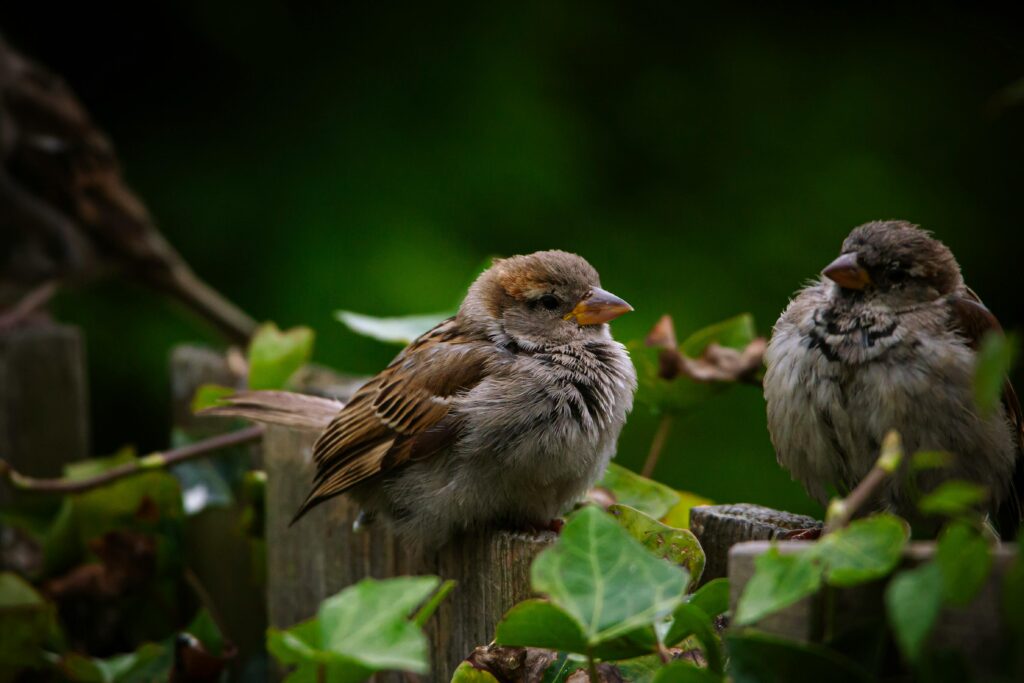
In the summers, my father and I would set up birdhouses in our little garden. Every summer, the sparrows would come back, looking for a safe space to build their nests.
Bringing twigs, then later when their eggs are hatched, feeding the chicks, and teaching them to fly. It was absolutely magical how life unfolded in front of us.
We would keep clean water available all the time, along with quality bird food, grains, etc. The bird feeder is always filled, inviting all sorts of other guests as well, from house sparrows and squirrels to bulbuls, parrots, and crows.
Watching them, in those warm moments, I would always think, if only I could write something about this very moment.
The beauty of life can be expressed as it is.
Haiku: My introduction to it
Poetry and literature have always enticed me. But when I first read a poet’s haiku in an online writing column, I was amazingly surprised.
How the beauty and the observation of a moment can be expressed in such a laconic yet impactful manner!
I was in awe.
Three lines of haiku seemed so simple at first.
But after reading a lot of haiku poems and meeting talented poets along this journey of writing, I got to learn the nuances and art of writing haiku. It is not just about three lines and a syllable count, although syllable count is a matter of discussion for some other time. This is actually more than that.
Haiku and the world around
Haiku really helped me to see the extraordinary in the ordinary. I was once told if you can express your views and emotions in a more sophisticated form, you won’t need too many words, but just some words that will be heard and understood. You will discover your own voice.
I have pondered on this thought a lot. I enjoy reading detailed writings, lyrical prose, and all the styles of poetry.
But the art of writing and, in fact, reading haiku changed the view of the world for me.
As I started noticing even the subtle of moments around, like blooming of flowers, pink of sky, scent of jasmines, twilight colors, birds picking twigs, children laughing in the park, change in seasons with my emotions and feeling deeply the moment of love, grief, joy, happiness, unhappiness etc.
The art of paying attention with haiku
This Japanese art of writing haiku poetry, which also includes other forms like senryu, tanka, haibun, haiga, renga, etc., explores the layers of human nature and the world we experience around us.
Happiness and sorrow go hand in hand in this world, but what matters is that we really feel part of that.
How many times have you actually looked at the sky or observed a leaf’s slow spiral? The sound of wind brushing against a closed window, the stillness of a summer afternoon, and raindrops falling and falling through the night.
There’s no dramatic turn of events, but just a moment, a space where you find yourself being there.
For example—
first autumn morning—
the mirror I stare into
shows my father’s face
This poem by Murakami Kijo is a poignant poem.
The first line shows the transition of season, the first autumn morning, also implying the melancholy and the tinge of chill in the breeze, the time before the winter arrives.
Followed by a phrase that is emotional and symbolizes aging, maturity, and the passage of time. As the poet looks at himself in a deep introspective manner. His own reflection resembles his father, and he can see the similarities both on a physical and emotional level.
Maybe now, he understands his father more when he sees himself as his father’s reflection.
There is a sense of reflection, deep contemplation, and acceptance in this simple yet powerful poem.
Another poem—
Don’t worry, spiders
I keep house
casually
By Kobayashi Issa is a simple yet fun haiku. Just an ordinary day where the poet is chill, laid back, and almost welcoming to the spiders for their stay in his house.
Next one by Nicholas Virgilio
spring wind frees
the full moon tangled
in leafless trees
This haiku has rhyming sounds, and though haiku are not generally written with rhymes, it evokes the image of spring as well as the sound of spring. The branches moving in the night’s stillness. And the view of the full moon in the sky, bright and glorious.
The tangled branches with the breeze and the moon show the beautiful portrayal of illusion and nature’s mystery. A simple moment pictured so vividly.
Being present and living in the moment
Haiku is not just about nature or observing the moments but about listening to yourself and the world in that moment.
Having a simple walk and a meaningful conversation with me and the nature around me.
The simplicity of a moment and the experience of being alive and having an expression to convey the simple joys and sorrows as well.
Sharing my own unpublished haiku—
ocean waves
watching the thoughts
come and go
It allows a pause in the life before life passes by quickly.
So, yes, haiku changed the way I see and observe the world.
It brings acceptance and magic in simple mundane happenings.
These little poems carry so many stories and emotions, encapsulating the subtle yet deep meaningful time. And provides a way to tune in with the world.
A snapshot in words and beauty of noticing.
So, do share what you think about haiku poems. Do you read or write? If yes, then share with me, and if not, then what are you waiting for? 🙂
You can read all of my published Haiku poems here- Let Words Fly
Happy reading and happy writing !